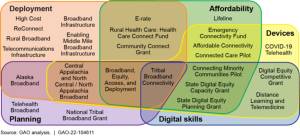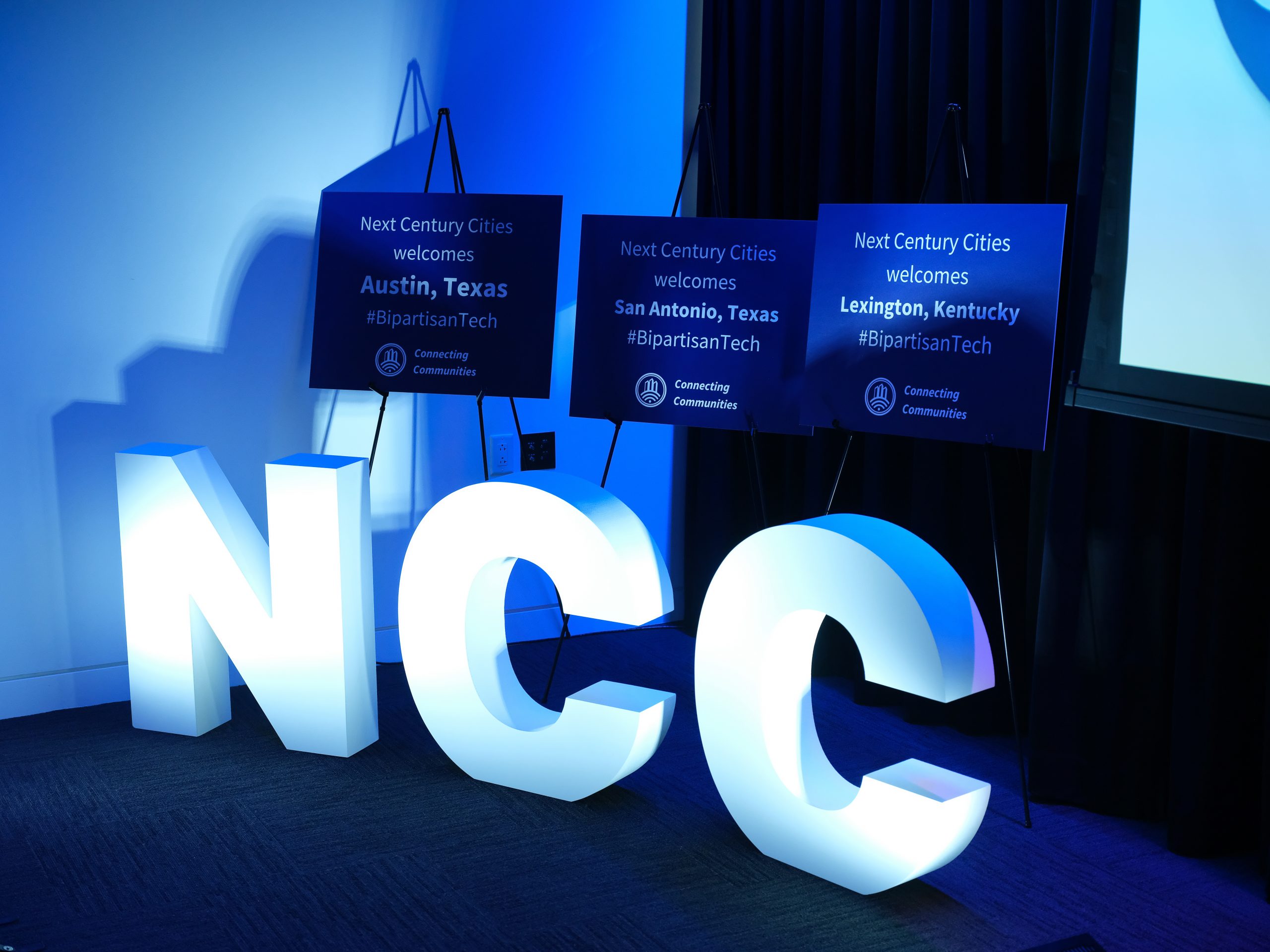By Corian Zacher

Image Credit: Government Accountability Office
In May 2022, the Government Accountability Office (GAO) revealed that the federal government has over 100 broadband programs spanning deployment, planning, affordability, device access, digital skills, and more, administered by 15 agencies. Despite robust federal funding aimed at bridging the digital divide, including $42.45 billion through the Broadband Equity, Access, and Deployment (BEAD) Program administered by the National Telecommunications and Information Administration (NTIA), the United States needs a coordinated broadband strategy.
With a fragmented federal policy, state governments are tasked with understanding how various programs impact their state. In addition to the myriad of federal broadband grants that fund projects directly, many state and local governments have used funding from the Capital Projects Fund, American Rescue Plan Act, and CARES Act for broadband access and adoption programs. Several states have their own broadband funding programs. As they begin releasing their draft five-year and Digital Equity Plans, understanding where funding already supports broadband programs is essential.
NTIA released an ongoing list of states with publicly available draft Five-Year Action and Digital Equity Plans, due in Fall 2023, as well as Initial Proposals, due by December 27, 2023. For example, Hawaii’s plan includes a goal of “Achiev[ing] objectives while orchestrating the maximum benefits from the range of other federal broadband programs.” As a first step, this requires the State to identify which federal broadband programs offer support for Hawaii residents. The plan notes ten programs where funding could support broadband connectivity across the islands.
Since many federal broadband programs have applicant or geographic eligibility criteria, the state funding landscape varies widely. For instance, Idaho’s funding list includes a blend of funding appropriated by the state legislature, awarded through the Capital Projects Fund, available through the Rural Digital Opportunity Fund, as well as NTIA and US Department of Agriculture funding targeted at specific Tribal and rural areas. States like North Carolina have a longer list of state allocations available for projects, shifting the landscape for federal funding opportunities.
With states outlining currently available funding, NTIA and other federal agencies have the opportunity and responsibility to examine how programs can work in tandem to maximize impact. Charting currently available funding also provides insight into what broadband needs will remain once the current monies are exhausted.
Understanding the funding and partner landscape across each state is critical for ensuring that every resident in the U.S. has reliable, affordable broadband connections in their homes in addition to the devices and skills to use them. With a wealth of information available from states, the federal government has ample tools available to address the GAO’s fragmentation concerns while delivering on its promise of achieving Internet for All.

